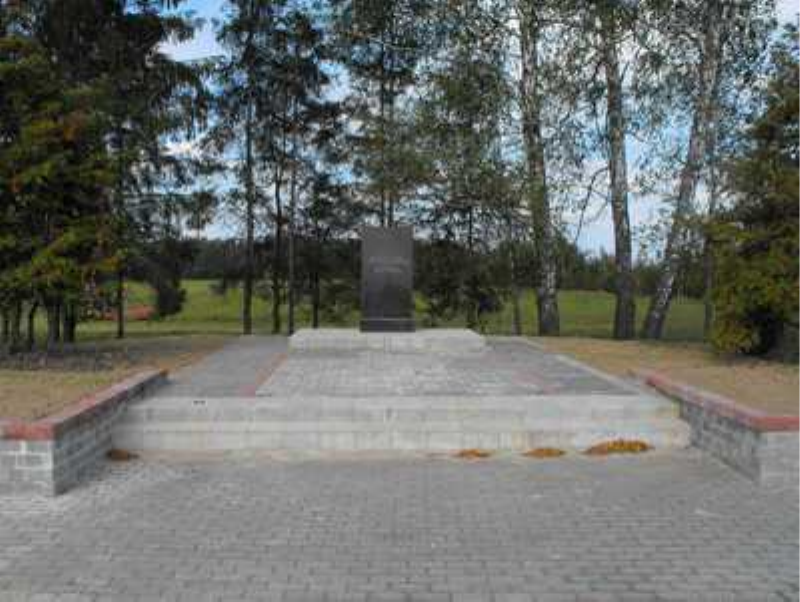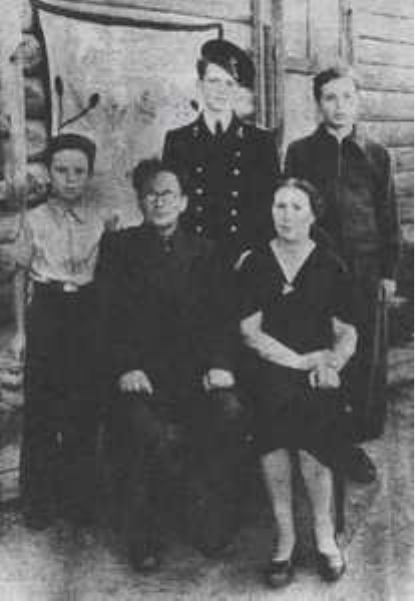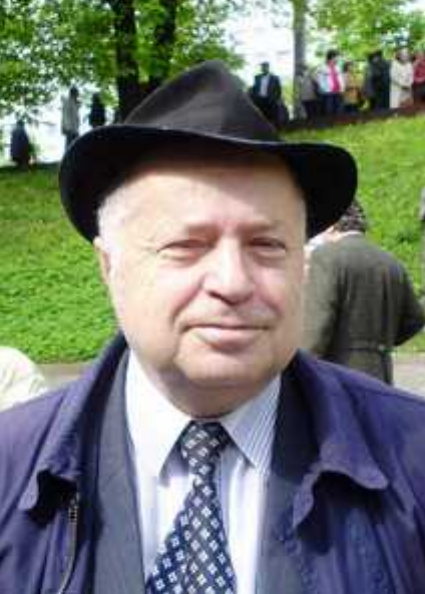Berezino – A Typical Shtetl
Courtesy JewishGen
Berezino – A Typical Shtetl
by Professor E. G. Joffe
Originally published as “Типичное Местечко” My Shtetl: The Voices of Jewish Settlements, Mogilev Region. Accessed 02 January 2017. http://shtetle.co.il/shtetls_minsk/berezino/ioffe.html
Translated by J. Sverzhinsky and C. Murray-Seegert
For over 500 years, this small town in Belarus has born the name of the river on which it is located, the River Berezino. Berezino is now the central city of the Berezinskii Minsk region of Belarus. It is located 101 km east of the city of Minsk, 50 km from the Grodzyanka railway station, on the Minsk – Mogilev highway. The population was 13, 323 inhabitants in 1999.
Berezino was first mentioned in an historic document dated 7 June 1501 1 as the “shtetl in the Lyuboshansky district,” belonging to the Grand Duchy of Lithuania (GDL). It was also known as Lower Berezino, Berezino Lyuboshanskoe. Beginning in 1668, Berezino was granted the Privilege of King John Casimir of Rzeczpospolita, a permit to trade and hold an annual market or fair (Translator’s note: Rzeczpospolita is the traditional and official name of the Polish State). After 1783, because of the partition of Poland, the town became part of the Russian Empire: Berezino was assigned to the Nowy Pogost parish, Igumen district, Minsk province.
Soviet power was established in November 1917. From February to December 1918, Berezino was occupied by German troops, and from August 1919 to 7 July 1920 by Polish troops. On 17 July 1924 Berezino was assigned to the Borisov district, but on 9 June 1927 it was reassigned to the Minsk district where it remained until 23 July 1930. On 15 January 1938, it was made part of the Mogilev district. On 27 September 1938 Berezino was classified as an urban settlement. From 3 July 1941 until 3 July 1944, the Nazi invaders occupied the town and its surroundings. On 20 September 1944 the central Minsk region was liberated. On 25 December 1962, the district was dissolved and only restored on 6 January 1965. On 7 March 1968 Berezino was officially recognized as a city. So we can say that Berezino is one of the youngest cities in the Republic of Belarus.
Most likely, the Jews first came to Berezino in the 16th century. This is suggested indirectly by several documents. For example, we see that in the summer of 1648 the Berezinskaya Jews suffered under the Cossacks led by Anton Nebaba, part of the army of Zinovy Bogdan Khmelnitsky. We also know that in 1702 the Jews of the town were fined in gold in the amount of 30 zloty by the Polish tribunal for not having paid “postal charges” during the invasion of the Swedish army – a payment established by the Constitution of the Rzeczpospolita’s Sejm (legislature). According to the official figures used in calculating the fine, the Berezin Kahal numbered 208 souls at that time.
By the first half of the 19th century, there was already a cloth manufacturing business in Berezino that was owned by Jews. In 1840, it produced 7,740 yards of cloth. In 1847, the Jewish community of the town consisted of 638 men and 651 women. By 1870, the Berezinskaya Jews prayed in seven synagogues. By 1880 the town totalled 3,181 residents, of whom 2,940 were Jews. Among them were merchants who owned some of the richest companies in the whole of the Minsk province. There were 459 houses, of which 41 were the property of honorary citizens, mostly Jews.
According to the 1897 census, 4,871 persons lived in Berezino, including 3,377 Jews. In the second half of the 19th century, the town had a working distillery, a mill, river docks and a rope factory owned by B. Starobintes. The Kapilevich and Mazo steam-powered mill had a good reputation and was known throughout the Minsk province.
Since the 1890s there had been a private Jewish school in town, whose first principal was Nosovich Abram Ginsburg. He was succeeded by Sochor Abramovich Ginsburg. In 1906, a single classroom for girls was opened; it soon expanded into a two-year female Jewish school, led by school-keeper Ginda Davidovna Ginsburg. According to the records of 1904, there was a library in Berezino that also housed the local Jewish charities.
Until 1908, the Rabbi in Berezino was SI Gilman, after 1908 Rabbi Joseph Kukes (1841-?), then until 1922 the Rabbi was Zvi Avrom Brodni (1850?). Hirsh Movshevich Livshits served as the Public Rabbi for the Igumen Uezd (district). Benjamin-Movsha Rubinchk (Rubenchik) was a Warden and Chairman of the Berezina Petty Bourgeoisie Council for many years, until the February Revolution of 1917.
In 1905, there were 3,200 residents in the town, more than half of whom were Jews. In 1912, Berezino had small commercial and savings-and-loan associations. Wealthy Jewish merchants exported wood and resin products, which were shipped down the river to the ports of the Baltic and Black Seas, as well as hemp, which was shipped upriver as far as Riga. Conversely, the town’s merchants imported salt and various types of grain. Great quantities of goods were shipped from the Berezina docks. The most prominent merchants were named Starobinets, Zeldovich, Parny and Peekus.
In the early 1900s there were Social Democratic organizations in many cities and towns of Belarus. One of them was active in Berezino, a fact confirmed by archival documents. The National Historic Archive of Belarus holds records of a court case titled “About establishing police surveillance of the members of the worker’s organization in the town of Berezino Igumen District” (the vast majority of the members were Jewish). Information was apparently collected from 5 December 1901 until 23 November 1904.
In this case file, there is a report sent by the Minsk governor to the Minister of Internal Affairs of Russia, dated 16 January 1902. The report states: “In the spring of last year in the town of Berezino a secret society was formed that is working with the aim to fight against the owners (masters) and the existing state system. The initiator and leader of the movement is a tradesman named I. Hayot, who arrived in Berezino town from the city of Minsk, and his main accomplice in propaganda is one
of the local artisans, the tradesman D. Markovnikov. Under the influence of these persons, the workers in the village of Berezino joined individual clubs and rallied later, forming a criminal community. A benefit society was organized and they established a so-called “combat squad… .”
In October 1901 a strike began in Berezino, led by apprentices and journeymen (the vast majority of artisans and industrial workers in Berezino were Jews). Authorities arrested thirteen of the most active of its organizers. At different times they sent I. Hayot, D. Markovnikov and A.M. Markovnikov to Eastern Siberia. The rest were kept under police surveillance. On 1 March 1905 there was a strike by apprentice tailors, shoemakers and wheelwrights. It was described this way: “From 10 o’clock in the morning a crowd of Jewish men and women between 12 and 25 years of age began to gather, and by 11 o’clock in the morning two crowds formed – the first of more than 70 people with sticks in their hands went out to the rope factory owned by Berka Starobinets in Popovschina Street … .” 9 To suppress this unrest, the Governor of Minsk sent half a squadron of dragoons (soldiers) to the factory.
Four months later, on 30 June 30 1905, all the workers and artisans went on strike. In the official report, ID Governor and Vice-Governor of Russia’s Ministry of Internal Affairs stated: “… From 9 o’clock in the morning on the streets of the town there were small groups of Jews, demanding the closure of shops. As a result of this, the shops had to be closed. The residents of the town, as many as 500 people, went to a meeting in the woods; when they returned at 7 pm the crowd defiantly marched through the small town, bearing red and black flags with Hebrew inscriptions at the front of the march while scattering leaflets in the crowd. Cries were heard of “Down with autocracy, down with the government, down with the war, long live the Social Democratic Party… .”
Later an investigation established that ” the demonstration was attended by the teachers Gurevich and Hazan, Sonja Zuckerman, Abraham and Moses Sirkin, Leiser Starobinets, Baruch Gurevich, Shmuyla Leviticus, Abraham Joseph Eliasberg, Haim Joseph Bolonik, and Joseph Novoselka, of which the last two were carrying flags… .” On 12 August 1905 an anti-government gathering of Jewish youth was held in Berezino, which was attended by 700 people. A Jewish pogrom that started in September 1906 was stopped by local peasants.
Many Berezinskaya Jews became active participants in the Civil War (Translator’s note: the conflict(s) that followed the Russian Revolution, 1917- 1922). Among them were I.E. Cherney, R.B. Rahnovich, G.S. Khodosh, A. Kh. Chertok, and Sh.V. Zakharyash. In the 1920s there were Jewish, Belarusian and Polish schools in the town. In the Jewish school, almost all subjects were taught in Yiddish.
In 1925, a Jewish agricultural cooperative was established in the town and its surroundings; it was named after A.F. Myasnikov. In 1924 the Party Branch Secretary in Berezino was C.E. Mazo. The membership of the Berezinski District Party Committee elected Kagan as its Chairman. Among the first Secretaries of the Berezinskii District Party Committee during the period from 1924 -1930 were Efremovich Mark Slavin and Yevno Isaakovich Sosin. The Komosol District Committee was headed by Lev Gertsovich, who later became the First Secretary of the Central Committee of Komosol.
On 23 June 1941, the second day of the Great Patriotic War (Translator’s note: WWII), a special unit for the protection of the strategically important bridge that crossed the Berezina River on the Minsk-Mogilev highway was recruited in Berezino from among the Communists. This group included Solomyansk, the Director of the High School, Rife Ginzburg the senior Tax Inspector, and other Berezinskaya Jews. In August 1941 the Nazis carried out the mass murder of the Jews – first targeting young healthy men and boys – that is, all those who could organize Jewish resistance against the Nazis. Two hundred and fifty unarmed men and boys were taken from the town, marched out and killed. A monument on the spot where they died reminds us of this tragedy.

The monument on the site of the execution of 250 Berezinskaya Jewish men and boys. The Jewish nationality of the victims is not mentioned in the inscription. The monument is located at the side of the M4 road, the Minsk-Mogilev highway, between km 110 and 111.
For the rest of the Berezino Jews, a ghetto was created on Internationalya Street on the orders of the German commandant, into which the Jews from the town and all the small villages of the Berezinskii area were forcibly driven.
On 25 December 1941, the 12th Battalion of Police and Auxiliary Services, commanded by the executioner Antanas Impulyavichyusa, arrived in Berezino. On the morning of 26 December, they began to break into the homes of the ghetto prisoners, driving them out into the street and leading them to be shot. Lithuanian punitive forces and police officers from the local town garrison helped in this bloody act. No one was shown pity – neither the elderly, nor children, nor pregnant women, nor sick people. Any who resisted were shot on the spot, as ordered by Impulyavichyusa.
A monument at the end of Internationalya Street today recalls the tragic death of 940 Jews from Berezino and neighboring towns.
Dozens of Berezinskaya Jews took an active part in the fight against the Nazis in 1941 -1945 on the fronts of the Great Patriotic War, and also in the ranks of the Belarusian partisans and as part of the anti-fascist underground. Here is just one example: Moses Peisakhovich Prusak (b. 1910) became one of the leaders of the guerrilla movement in the territory of the Minsk region. In August 1941 he became the leader of an underground group, which operated in the area of the Berezinskii and Borisov districts. After April 1942 they were partisans: Moses Peisakhovich was Commander of the sabotage group, and from October 1942 to July 1944 Commissioner of the famous NA Partisan Brigade Shchorsa, which operated in the Borisov, Cherven and Berezinskii areas. He was awarded the highest state honors, but Moses Peisakhovich never received the title ‘Hero of the Soviet Union’ although he was nominated several times. There are strong reasons to believe that this was because of the infamous ” fifth paragraph” profiles.

The author’s family (Family Joffe)
After the liberation from German occupation and the victory over fascism, most of the Jews who had been evacuated to different parts of the USSR came back to Berezino. After the demobilization of the veterans, many of whom were disabled, many Jewish partisans also returned. In the 1950s a few hundred Jews lived in the town. In the early post-war years, the District Party Committee Secretary of Berezino was Samuel Monusovich Sverdlov, who had been one of the leaders and active members of the partisan movement in Belarus during World War II.
During the 1950s -1990s the number of Jews in Berezino was continually reduced, either by departure to Minsk and other cities in Belarus, or in the last decade, by immigration to Israel and the United States. The following inhabitants who lived here during this period were regarded with high esteem: the teachers Lev F. Dobin, Bella Ilinichna Rubinchik, Herz Moiseevich Lvovich, and Semyon Goldin; the Executive Committee Secretary Vladimir Ilyich Levin, Director of the Motor Depot; the doctors Zeldin and Yakhnin; the tailor Mikhail Klebanov; the engineer and economist Honya Neumann; the heads of the DEU Road Maintenance Company, Samuel Fadeevich Gurevich and Simon Fadeevich Gurevich; as well as the Street Committee Chairman Kuna Naumovna Joffe.
On the night of 9/10 July 1998, 48 gravestones and monuments in the Jewish cemetery of Berezino were savagely destroyed. The perpetrators of this barbarism have not been found, to date. By 1999, only about 15 Jews still lived in the town.
About the Author

Professor Dr. Emanuel G. Joffe was born in 1939 in the town of Berezino, Minsk region. In 1961 he graduated from the Faculty of History of BSU. Later he earned a degree in Political Science from the National Institute of Human Sciences of the Republic of Belarus, and then earned an advanced degree in Sociology from the National Institute for Higher Education and Humanities Education. He worked as a high school Assistant Principal and taught at the Teacher’s College. Since 1978, Professor Joffe has been on the faculty of the Belarusian State Pedagogical University as Professor of Political Science and Law, where he teaches courses in Political Science, Socialogy and the Fundamentals of Belarusian State Ideology. He was awarded a Doctorate in Historical Sciences in 1993. Professor Joffe is the author of 650 scientific works, including 42 books and pamphlets.